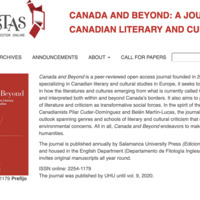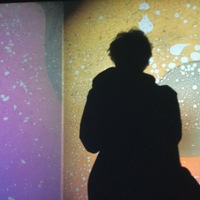Books by Reena Sastri
Papers by Reena Sastri

Contemporary Literature, 2021
The title of Anne Carson's 2009 poem "Wildly Constant" poses a question: how to reconcile constan... more The title of Anne Carson's 2009 poem "Wildly Constant" poses a question: how to reconcile constancy-fidelity; continuity-with wildness-freedom, openness to the unexpected, to chance and change. The question pertains to marriage: the poem tells the story of a honeymoon that is also a writer's retreat, and its narrative recounts the speaker's leaving and returning to her husband's bed. Seen differently, the paradox of wild constancy inheres in such practices as ekphrasis, translation, and literary criticism, where fidelity to a work of art both invites and constrains creative response. Encounters with persons and texts arrest, enliven and inspire. Being true to these encounters entails openness to being changed by them, and willingness to be true to them by transforming them in turn. Creativity inheres in this wild constancy. "Anne Carson is not an uncreative writer," Oran MacKenzie notes, "but" her work is "highly derivative, blending poetry, essay, criticism and translation in multi-layered and complex juxtapositions of quotes, allusions, echoes and ekphrastic descriptions" (227). i "Genre hybridity," remarks John James, "has long been a hallmark of the Anne Carson brand" (n.p.). Joshua Marie Wilkinson observes that in her work, "criticism, reading, writing, visual art, philosophy, drama, poetry, and prose all seem[] of a piece" (2, emphasis in original). For Wilkinson, this puts her in a "freakish category" of writers who "obliterate" genre (1). ii On the contrary: far from standing at a "freakish" remove from other writing, her work, in its distinctive shapes, not only illuminate continuities between modes of response-such as ekphrasis, translation, criticism-but also reveals an intimacy between responsiveness and creativity that has profound implications for how we think about creativity, reading, and the lyric poem. Sastri 2 Carson's work brings to light how reading and inventive response take place in the space between two people, putting her poetics into conversation with studies that explore the fundamentally collaborative nature of creativity in the arts, sciences, and everyday life. iii Her scholarly essays avowedly reject an objective stance; Carson as a reader refuses to separate learning and feeling, scholarship and attachment. Elizabeth Coles' forthcoming monograph-a welcome intervention in a critical field that has thus far lacked ambitious, synthesizing accounts of Carson's work-examines the stakes of Carson's practice of exposing her subjective reading experience. iv No less than her essays manifest their subjective investments, her poems, even when most inflected with personal experience, memory, and emotion, are saturated with others' words and works. I wish to examine Carson's conjoining of intertextual receptivity and passionate expression in her lyric poems; I suggest that doing so can help to illuminate lyric itself as the charged, recurrent evidence of, and potential for, intersubjective, heuristic encounter. v Thanks to her notorious genre-bending, Carson is rarely discussed as a lyric poet. vi Yet she translates lyrics from Greek, German, and French, crafts sonnets, writes ekphrastic poems and sequences, and engages at times in musings on nature, memory, and love that recall the romantics. Paradoxically, the absence in Carson's oeuvre of a clear dividing line between lyric and writing about an art object or text enables us to draw from it a version of lyric in which intertextuality and expressivity, long opposed by lyric's theorists, are two sides of a coin. I take up the notion of wild constancy to name the process, central to Carson's poetics, by which something outside-text or artwork-alters the inside, becoming part of "something … wild" that underlies poesis ("Cassandra Float Can," Float n.p.). vii The emotional and psychic charge of the aesthetic encounter, the way that artworks can seem themselves more person-like than thing-like, and the way the encounter can initiate a Sastri 3 process of discovery and creation, have been framed suggestively in recent writing on ekphrasis by Brian Glavey, Rachel Eisendrath, and others. viii Carson writes about paintings, drawings, and etchings by Giotto, Betty Goodwin, and Edward Hopper, films by Antonioni, site-specific art by
Auden at Work, ed. Bonnie Costello and Rachel Galvin
The Cambridge History of American Poetry
The Literary Encyclopedia, 2010
Contemporary Literature, Nov 1, 2009
Twentieth Century Literature, Mar 22, 2012
Twentieth-Century Literature, Oct 1, 2004
JSTOR is a not-for-profit service that helps scholars, researchers, and students discover, use, a... more JSTOR is a not-for-profit service that helps scholars, researchers, and students discover, use, and build upon a wide range of content in a trusted digital archive. We use information technology and tools to increase productivity and facilitate new forms of scholarship. For more information about JSTOR, please contact support@jstor.org.
Review essays and reviews by Reena Sastri
European Journal of English Studies
American Literature, Mar 1, 2012
Modernism/modernity, Jan 1, 2008
Essays in Criticism, Jan 1, 2005
... proves unconvincing, and for Berryman's Dream Songs it is not particularly illuminating, ... more ... proves unconvincing, and for Berryman's Dream Songs it is not particularly illuminating, while with respect to Tennyson's 'Ulysses' the introduction of ... Chapter 4, 'The Drama of Breakdown and the Breakdown of Drama: The Charismatic Poetry of Byron and Sexton', describes a ...










Uploads
Books by Reena Sastri
Papers by Reena Sastri
Review essays and reviews by Reena Sastri